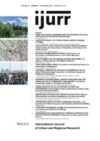Post‐Mao China is marked by priorities which unlike Maoist redistributive policies encourage and tolerate uneven regional development. But this approach has been under severe attack, and the Ninth Five‐Year Plan (1996–2000) which calls for narrowing the regional gap signals that new policies are due. These changes reflect shifts in development philosophies and theories, which are overlooked by many existing studies which emphasize only policies and their outcome. This paper explores the thoughts and ideas that underlie post‐Mao regional policy, by reviewing the Chinese literature on regional development from about 1985 to 1995. New applications of socialism and the influence of Western theories have helped to remove the stigma associated with uneven regional development, and have guided post‐Mao regional policy which favors the more developed eastern region. But the uneven regional development policy is blamed for the escalation in regional inequality, outflows of resources from poorer inland provinces, and regional conflicts and protectionism. More recent research which advocates renewed attention on and regional diffusion to the inland region, has inspired a new generation of regional development models and has influenced urban and regional policy. Nevertheless, the theory of Chinese regional development continues to be constrained by the obligation to justify official policy, and a lack of attention to firms, enterprises, and the relations between production and space.
Details
Written by:
C. Cindy Fan
Digital Object Identifier (DOI)
10.1111/1468-2427.00105
About DOI
Read full article as PDF
Read full article as HTML
See the references for this article
